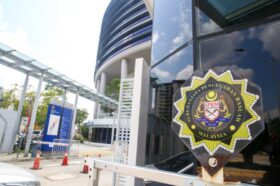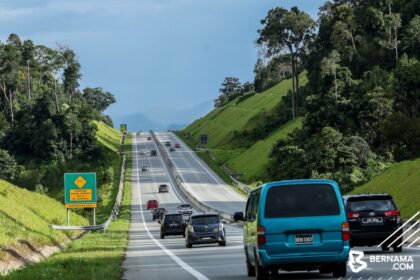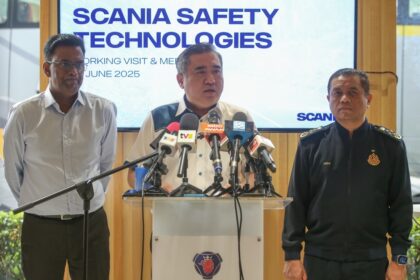SHAH ALAM, June 13 — Tour and express buses, as well as heavy goods vehicles over 3,500kg registered from 2015 onwards, must have their Speed Limitation Device (SLD) checked and verified starting October 1, Transport Minister Anthony Loke said today.
He said the first phase of enforcement will involve checking if the SLDs are activated and working properly, with verification required every two years.
“These vehicles that were registered from January 1, 2015 are required to obtain the SLD functionality verification and report from the following parties – vehicle manufacturer or producer, technical service recognised by Road Transport Department, workshop recognised by JPJ, and accredited certification body recognised by JPJ.
“This SLD functionality verification and report document must be renewed every two years and brought along to the motor vehicle inspection centre and during the application or renewal of a permit with the Land and Public Transport Agency.
“This document must also be kept in the vehicle at all times for enforcement purposes by JPJ,” Loke told reporters after a work visit to the Scania (Malaysia) headquarters here.
For vehicle carrying goods (with a maximum weight exceeding 3,500kg) and passenger vehicles (carrying more than eight passengers and with a maximum weight exceeding 5,000kg) there were registered before January 1, 2015, and which have the SLD function available in its electronic control unit (ECU), activation of the device is mandatory.Loke said the functionality report for these vehicles must be renewed every two years.
The report must also be present during vehicle inspection at Puspakom, permit renewals with APAD and be kept in the vehicle for enforcement inspection purposes.
“Enforcement of the SLD activation in the ECU will begin next year, January,” he added.
As for inspections conducted at manufacturing plants, he said the authorities will ensure that the speed limit set in the SLD complies with the national speed limit for all buses and heavy vehicles – 90km/h.
He said those who have yet to install the SLDs for heavy vehicles must do it soon as it will be made mandatory.
“The installation of the SLD must be certified by parties as I have mentioned above.
“This is so that the device installed is according to specified technical standards and is functioning properly to ensure safety and legal compliance,” said Loke.
The enforcement for this category will begin in July 2026.
He said those who fail to comply could have their permits revoked if their SLDs are found not to be updated, once the grace period for installation ends.
How SLDs work
Loke said the SLD is integrated with the vehicle’s ECU, which manages the engine performance, communicating directly with the throttle and fuel injection systems.
The SLD constantly monitors the vehicle’s speed using data from speed sensors.
Once the vehicle reaches the set speed limit – 90 km/h – the SLD will automatically cut the throttle response, adjust the fuel supply and some systems modifying the engine’s ignition timing.
The SLD does not apply brakes to a vehicle, as it only prevents the engine from accelerating further once it has reached the set speed limit.
Loke gave an assurance that certified SLDs are tamper-proof.
“This is why we have specified where the device can be installed and where it should be checked – with our certified parties,” he said.
Source: 
JPJ to enforce speed limiter checks on buses, heavy vehicles from Oct 1

































